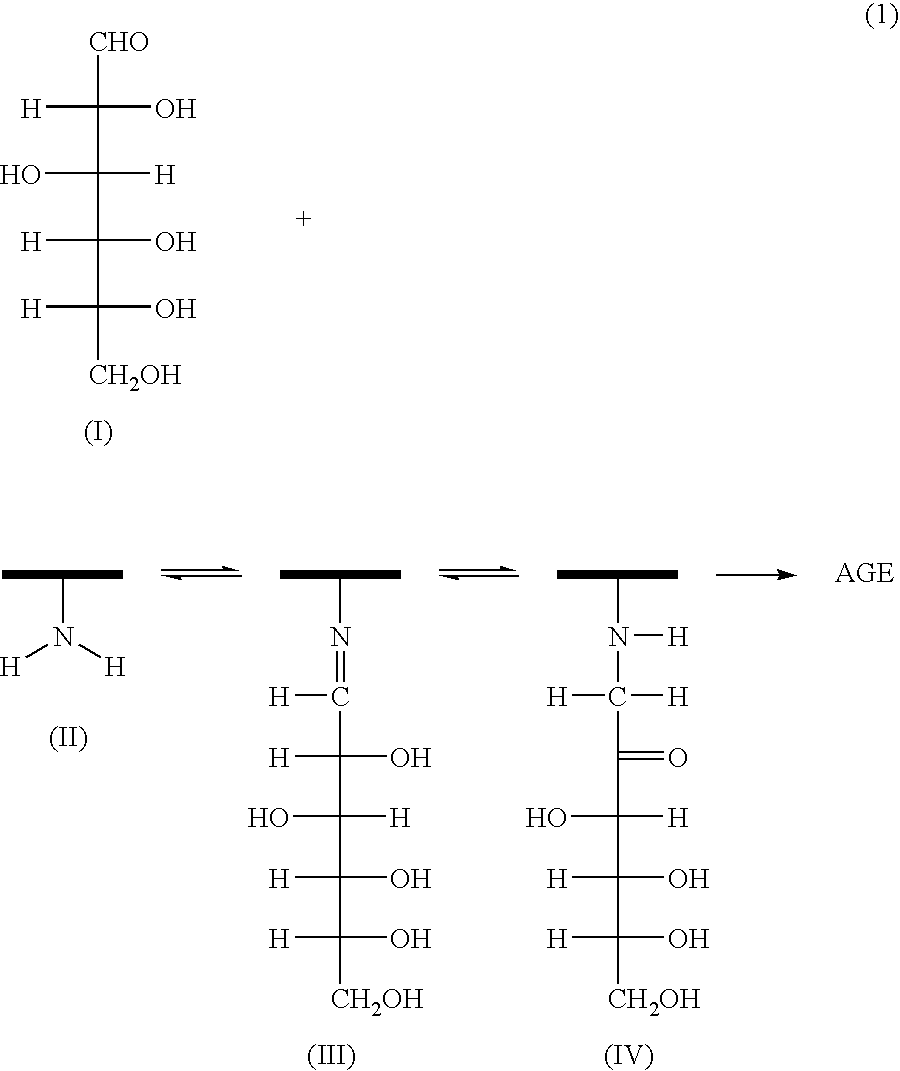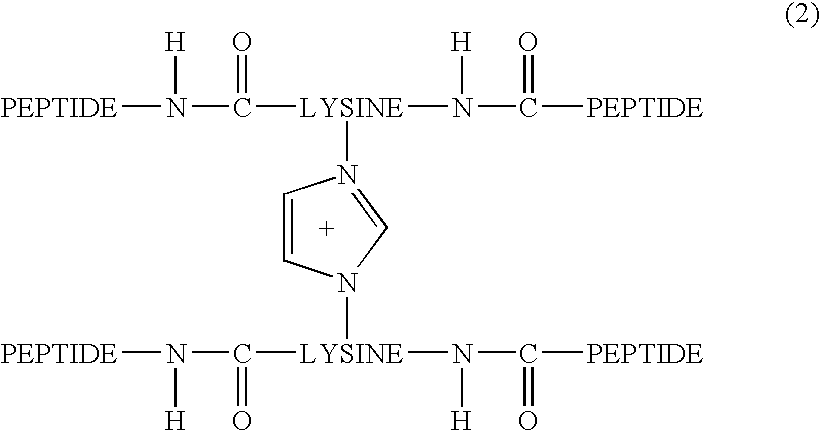Dialysate of peritoneal dialysis and its preparation method
a technology of peritoneal dialysis and dialysis solution, which is applied in the direction of solvent extraction, biocide, separation process, etc., can solve the problems of peritoneal dialysis without the same means, adverse effects that were recognized, and the disfunction of the peritoneum, etc., and achieve the effect of reducing fi
- Summary
- Abstract
- Description
- Claims
- Application Information
AI Technical Summary
Benefits of technology
Problems solved by technology
Method used
Image
Examples
example 1
[0052] For estimating the suppression effect on protein cross linking sensitively, glyoxal was used. This chemical is one of glucose degradation products and much greater promoter to accelerate AGE formation than glucose does. Glyoxal (20 mM / l) was added into phosphate buffer solution, in which human serum albumin (50 mg / ml) was dissolved. As a test specimen, mercapto compound, listed in Table 1, was added into the solution at 20 mM / l, then incubated at 37° C. as long as for two weeks. Fluorescent intensity (FI) of the cross linked albumin in the incubated solution was determined at 440 nm (excitation: at 370 nm) by fluorescence meter (Nihon Bunkou Co.). The suppression effect was estimated as follows; dividing the increase in the fluorescent intensity through the incubation in the case of “test specimen added”, by that of “no test specimen added (control 1)”. The result is shown in Table 1.
[Control 1]
[0053] In Control test 1, the fluorescent intensity was determined in the same m...
example 2
[0054] Methylglyoxal in place of glyoxal as GDP(Glucose Degradation Products) in Example 1 was used under the similar conditions as Example 1. Sodium bisulfite and sodium sulfite were tested as protein cross linking suppressors. Fluorescent intensity was determined in the same manners as in Example 1. The results are shown in Table 2.
[Control 2]
[0055] No protein cross linking suppressor, but methylglyoxal alone was added to human serum albumin. Fluorescent intensity was determined in the same manners as Example 2. The results are shown in Table 2.
TABLE 2Increase inSpecimen(Cross linking suppressors)FI (%)Example 2(a)Sodium bisulfite46(b)Sodium sulfite61Example 3(a)Acetyl salicylic acid53(b)Ascorbic acid86Example 4(a)Quercetin dihydrate19(b)Catechin hydrate64(c)Epicatechin72Example 5Heparin96Example 6Amino guanidine hydrochloride31Example 7N-Phenacyl thiazolium bromide28Example 8(a)N-(2-thiazolyl)-sulfanylamide45(b)2-mercapto-4-methyl-thiazole acetic82acid(c)4-(1,2,3,4-thia triaz...
example 3
[0056] The cross linking suppressors in Example 2 were replaced by acetylsalicylic acid and ascorbic acid and other conditions were similar to those in Example 2. The increase in fluorescent intensity was determined to estimate relative ratio to those of Control 2.The results are shown in Table 2.
PUM
| Property | Measurement | Unit |
|---|---|---|
| concentration | aaaaa | aaaaa |
| temperature | aaaaa | aaaaa |
| pressure | aaaaa | aaaaa |
Abstract
Description
Claims
Application Information
 Login to View More
Login to View More - R&D
- Intellectual Property
- Life Sciences
- Materials
- Tech Scout
- Unparalleled Data Quality
- Higher Quality Content
- 60% Fewer Hallucinations
Browse by: Latest US Patents, China's latest patents, Technical Efficacy Thesaurus, Application Domain, Technology Topic, Popular Technical Reports.
© 2025 PatSnap. All rights reserved.Legal|Privacy policy|Modern Slavery Act Transparency Statement|Sitemap|About US| Contact US: help@patsnap.com


